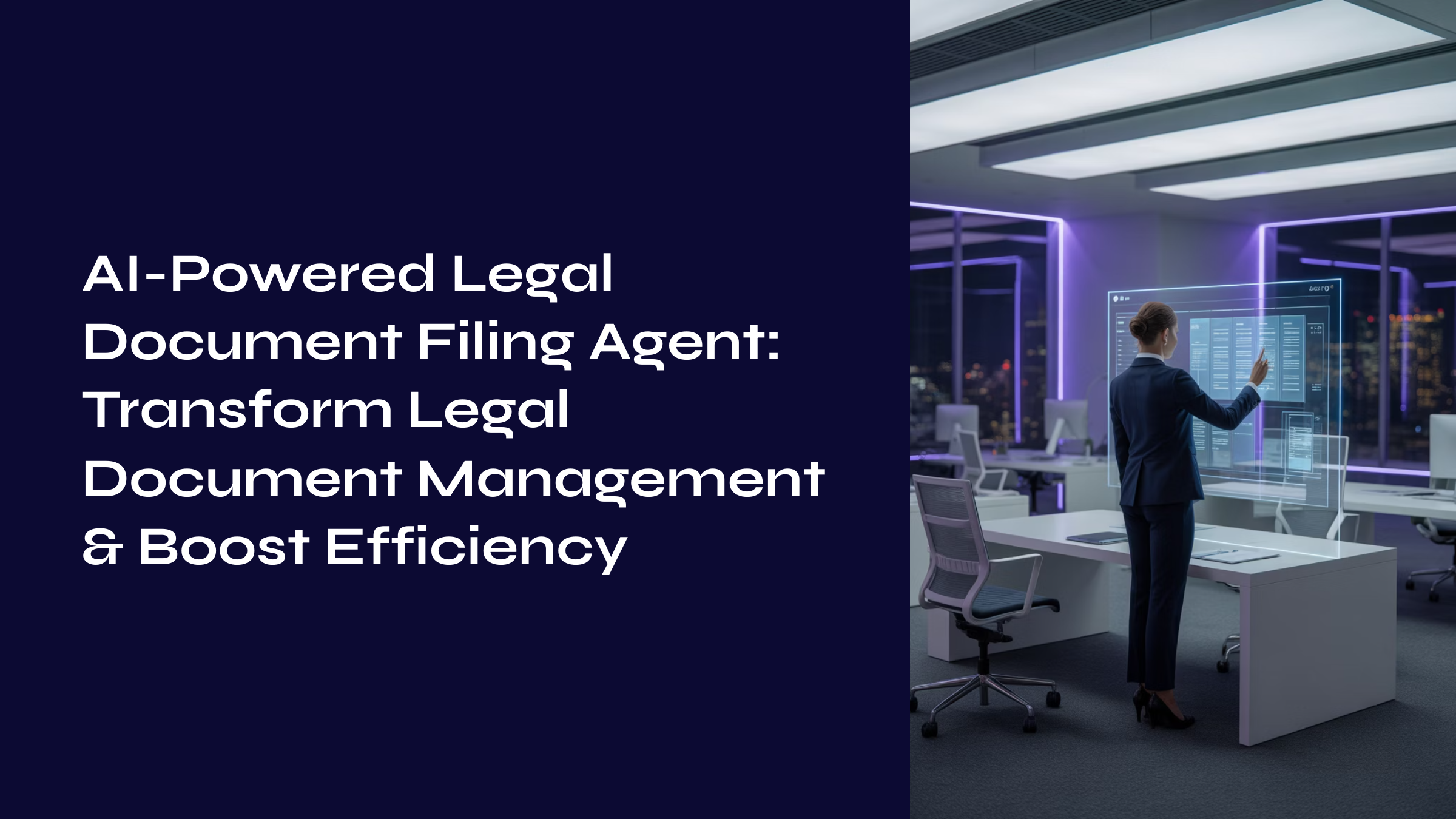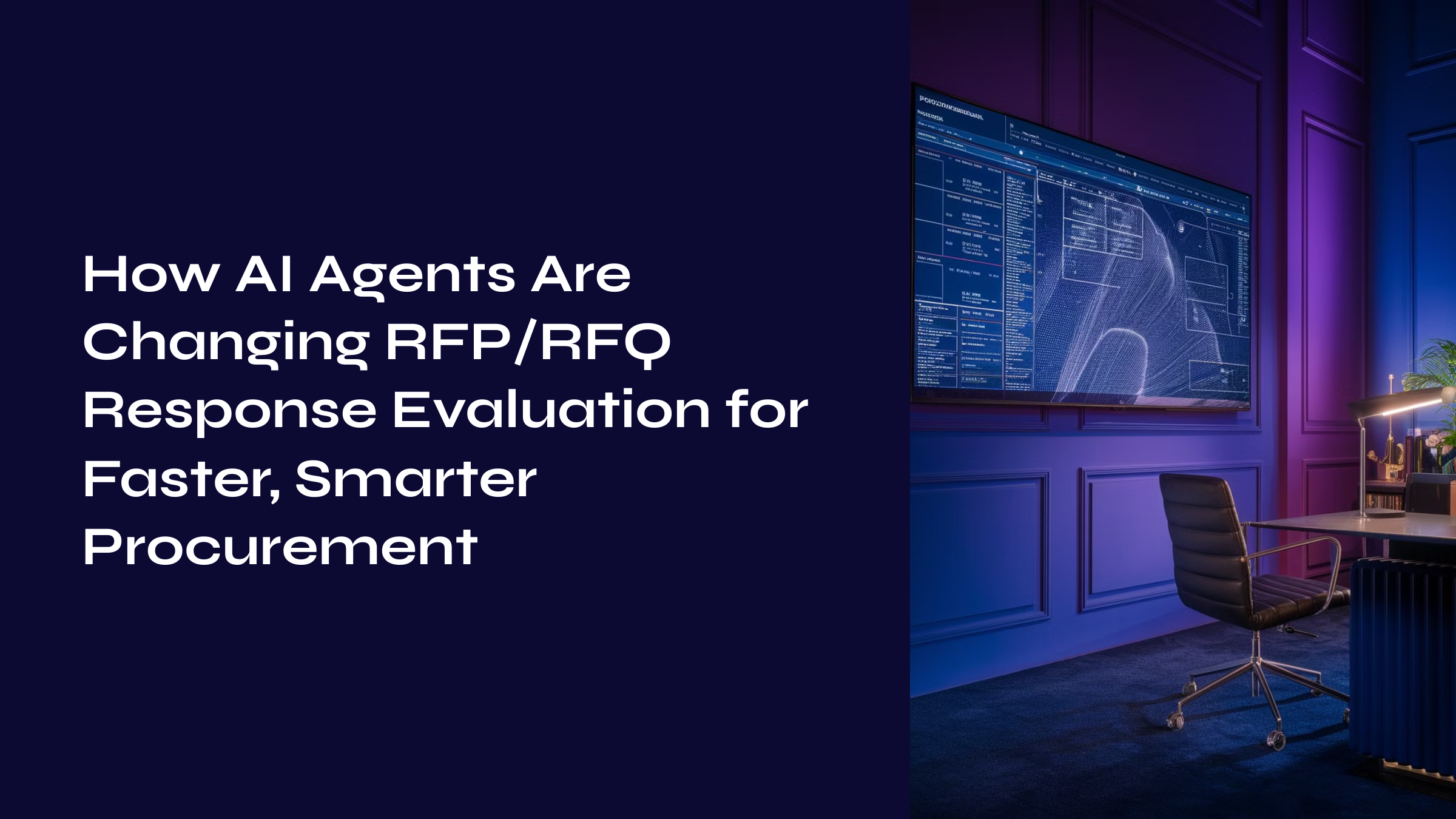The global beauty industry, valued at $511 billion in 2023, is a dynamic and fast-evolving market. However, behind its vibrant product lines and innovative offerings, beauty brands face significant challenges. The demand for personalized products, shorter development cycles, and sustainable formulations continues to grow, all while balancing the need to reduce R&D costs and maintain high product quality.
In response to these challenges, artificial intelligence (AI) is proving to be a game-changer. With 76% of beauty brands embracing AI as part of their digital transformation journey, the technology is enabling companies to streamline their product development processes. AI is helping beauty brands innovate faster, improve precision in formulations, and meet the growing demand for sustainability, all while satisfying the unique preferences of today’s consumers.
Overcoming Beauty Industry Challenges with AI
The beauty industry is facing several hurdles that slow down growth and innovation:
- Personalization: Consumers demand products tailored to their unique skin type, tone, and concerns, making mass-market solutions less effective.
- Rising R&D Costs: Traditional product development is expensive and time-consuming, increasing costs and extending timelines.
- Sustainability: Brands are under pressure to source sustainable ingredients and reduce waste.
- Faster Product Development: Rapidly changing trends require faster development cycles without compromising quality.
- Regulatory Compliance: Navigating complex global regulations adds complexity to product launches.
To stay competitive, beauty brands must adopt new technologies like AI, which can drive faster, more personalized, cost-effective, and sustainable solutions. AI is poised to transform how beauty brands meet modern challenges and consumer expectations.
How AI is Transforming Beauty Product Development
A key area where AI is making a massive impact is in ingredient efficacy prediction. Traditionally, beauty brands had to rely on extensive lab testing that could span anywhere from 12 to 24 months. With AI, this timeline is being drastically reduced.
One of the most notable developments is the use of predictive modeling. By leveraging AI algorithms, brands can simulate and predict the interactions of thousands of different ingredients, determining which combinations are most likely to be effective, stable, and safe. What once took months of trial and error can now be accelerated, cutting development cycles by as much as 60%.
Success Story: A Leading Beauty Brand’s Journey with AI
In 2014, one of our clients in the beauty industry faced the challenge of accelerating product development while ensuring efficacy. Their goal was to reduce time-to-market without compromising on quality. To address this, we implemented an AI-driven solution, which included:
- An ingredient efficacy prediction platform powered by machine learning
- Analyzing thousands of ingredient combinations to predict performance
- Real-time stability prediction algorithms
- Automated compliance checking system
The outcomes were:
- 45% reduction in development timeline
- 30% decrease in R&D costs
- 92% accuracy in predicting formula stability
- 3x increase in successful first-round formulations
By leveraging AI, the brand was able to bring products to market faster, more cost-effectively, and with a higher success rate on the first attempt.
Implementing AI in Beauty Product Development: A Step-by-Step Guide
For beauty brands looking to integrate AI into their product development process, here’s a structured approach to get started:
Phase 1: Foundation (1-2 months)
- Audit existing data: Understand the quality and availability of formulation data, ingredient performance records, and customer feedback.
- Define success metrics: Outline clear goals for time-to-market, cost reduction, and formula stability.
- Choose the right technology stack and implementation team: Selecting an AI development team and platform (such as cloud infrastructure and machine learning frameworks) is crucial at this stage.
Phase 2: Development (2-3 months)
- Data preparation and cleaning: This is an essential step to ensure that the data is usable for machine learning algorithms.
- Model development and training: Create machine learning models to predict ingredient interactions and formula stability.
- System integration: Ensure the AI tools integrate smoothly with existing product development systems.
- Initial testing and validation: Run tests to validate the predictions and make adjustments as necessary.
Phase 3: Deployment (1-2 months)
- Pilot program: Test the AI system on a smaller scale before full deployment.
- Team training: Ensure internal teams are trained on using the new AI-driven tools.
- Process optimization and performance monitoring: Continuously monitor and optimize the AI system’s performance to ensure it delivers on its promises.
Technology and Budget: Laying the Groundwork for AI Success
For beauty brands, implementing AI isn’t just about adopting the latest tech—it’s about building a solid, scalable foundation that ensures long-term success. Let’s break down what it takes to get there.
1. Core Infrastructure: Your AI Backbone
The infrastructure is where the magic begins. A robust system ensures your AI tools run efficiently and can scale as your operations grow.
- Cloud Computing Platforms: Solutions like AWS, Azure, or Google Cloud Platform provide the flexibility and scalability needed to handle large datasets and complex computations.
- Data Storage Solutions: Reliable and secure storage is critical for housing massive amounts of product, customer, and ingredient data.
- Computing Power for Machine Learning Models: High-performance GPUs and TPUs are essential for training and running AI models effectively.
2. Software Stack: The Brains Behind the Beauty
Your software ecosystem is what brings your AI strategies to life, enabling you to analyze data, predict trends, and optimize formulations.
- Machine Learning Frameworks: Tools like TensorFlow and PyTorch are at the heart of AI, enabling model creation and training.
- Chemical Modeling Software: Specialized software for simulating ingredient interactions, ensuring precision in formulations.
- Data Visualization Tools: Simplify complex data, helping teams make informed decisions quickly.
3. Budget: Investing in the Future of Innovation
AI implementation requires upfront investment, but the long-term returns in innovation, efficiency, and customer satisfaction make it worthwhile.
- Initial Setup: $150,000 – $300,000
Covers hardware, infrastructure setup, and initial software licenses. - Annual Maintenance: $80,000 – $150,000
Includes ongoing software updates, cloud costs, and infrastructure upkeep. - Team Training: $30,000 – $50,000
Equipping your team with the skills to manage and maximize your AI tools. - Software Licenses: $40,000 – $80,000
For machine learning platforms, chemical modeling tools, and visualization software.
Making the Leap: Why the Right Foundation Matters
Think of AI as a marathon, not a sprint. A well-designed infrastructure minimizes downtime, ensures regulatory compliance, and supports continuous innovation. By investing in the right tools and training, beauty brands can not only keep up with industry demands but also lead the charge in product innovation.
Best Practices for Successful AI Implementation: Key Success Factors for AI Implementation in Beauty Product Development
Data Quality:-
AI-driven product development relies heavily on the quality and comprehensiveness of the data fed into the system. Key components of high-quality data include:
- Comprehensive ingredient database: Detailed and organized information on ingredients, including their chemical properties, safety profiles, and previous usage in formulations.
- Historical formulation records: Access to past formulations and their market success enables AI models to learn and predict successful ingredient combinations and formulas.
- Customer feedback data: Consumer reviews, preferences, and feedback provide critical insights into product performance and consumer expectations, which AI systems can use to tailor recommendations.
- Market performance metrics: Data on how existing products perform in the market allows AI to refine future product recommendations by considering sales trends, market share, and customer satisfaction.
Team Expertise:-
For AI to be implemented successfully in beauty product development, a multidisciplinary team is essential:
- Data scientists: Experts who build and refine machine learning models to analyze large datasets, helping predict successful formulations.
- Cosmetic chemists: Professionals with deep industry knowledge who understand how ingredients interact and ensure that AI-driven formulations are effective and safe.
- Regulatory experts: Specialized professionals who ensure that AI-generated formulations meet industry standards and comply with local and global regulations.
- Project managers: Responsible for overseeing the project, coordinating between teams, and ensuring timelines and goals are met effectively.
These success factors, combined with expertise and a well-integrated team, set the stage for AI-driven innovation in the beauty industry, enabling brands to stay competitive, reduce development time, and meet evolving consumer demands.
Common Pitfalls to Avoid in AI Implementation
- Insufficient Data Cleaning
AI models depend heavily on high-quality, clean data. Incomplete or inconsistent data can lead to inaccurate predictions and poor formulation outcomes. Brands should invest in robust data cleaning practices before feeding data into AI systems to ensure optimal results. - Lack of Cross-Functional Collaboration
AI implementation in beauty product development requires close collaboration between data scientists, chemists, and regulatory experts. Failure to align these teams can lead to ineffective AI models that fail to meet business objectives or regulatory standards. - Inadequate Validation Processes
AI-driven formulations need thorough validation, both in lab settings and through consumer feedback. Skipping this critical step can lead to product failures, delayed market entry, and reputational risks. - Poor Change Management
As AI systems evolve, so too must the internal processes and organizational culture. Without proper change management, teams may resist new AI-driven methodologies, leading to inefficient implementation and slow adaptation. - Overlooking Regulatory Requirements
The beauty industry is heavily regulated, and AI models must incorporate these regulations. Failing to account for the regulatory landscape can result in costly delays, rejections, or product recalls.
By focusing on these success factors and avoiding common pitfalls, beauty brands can leverage AI to accelerate innovation, improve product quality, and stay ahead in a competitive market.
The Future of AI in Beauty
Looking ahead, AI will continue to shape the future of beauty product development. Emerging trends include:
- Hybrid AI-human development teams that combine human creativity with the efficiency of AI.
- Real-time formula optimization, allowing brands to refine products instantly based on consumer feedback.
- Sustainable ingredient discovery, where AI helps identify eco-friendly alternatives without sacrificing performance.
- Predictive consumer testing, where AI forecasts how products will perform with consumers before launch.
Action Items for Beauty Brands Planning to Implement AI in Product Development
Immediate Steps (Next 30 Days)
- Assess current product development process: Review the existing workflows and identify areas where AI could add value, such as speeding up the R&D phase or improving formula accuracy.
- Audit existing data quality and quantity: Ensure that there is enough high-quality data to train AI models. This includes ingredient databases, customer feedback, market metrics, and historical formulations.
- Identify potential AI implementation partners: Seek out reputable AI technology providers or consultants specializing in the beauty industry to help with integration and deployment.
Short-term Goals (90 Days)
- Develop AI implementation roadmap: Create a detailed plan outlining milestones, resources, and timelines for the AI implementation process.
- Build cross-functional team: Assemble a team of data scientists, cosmetic chemists, regulatory experts, and project managers who can drive the AI project forward.
- Begin data preparation process: Clean, organize, and structure the data to be used for training AI models. This is a critical step to ensure that AI systems can learn from the best available data.
Success Metrics to Track
- Development cycle duration: Measure the reduction in time spent developing new products from concept to market due to AI involvement.
- First-time formula success rate: Track how often AI-driven formulations achieve desired results without needing significant adjustments or rework.
- R&D cost per product: Calculate how much it costs to develop each product, aiming to lower R&D costs over time.
- Time-to-market: Measure the speed at which new products are launched, with a focus on reducing this time through AI enhancements.
- Customer satisfaction scores: Monitor how well products are received by customers, including their perception of product performance and sustainability.
AI Adoption Strategies for Beauty Brands: Expert Tips for Small and Mid-Size Businesses
For Small Brands:
- Start with focused use cases: Begin by applying AI to specific, high-impact areas such as ingredient selection or product formulation, rather than overhauling the entire development process.
- Consider AI-as-a-Service solutions: Many AI vendors offer platforms that allow small brands to leverage AI without heavy upfront investment in infrastructure.
- Partner with established tech providers: Small brands can benefit from collaborating with larger AI technology providers that offer expertise and resources.
- Focus on data collection and organization: Collecting and organizing high-quality data early on is crucial for successful AI adoption.
For Mid-Size Brands:
- Invest in hybrid solutions: Consider a blend of external AI tools and in-house development to build a more tailored, scalable AI solution.
- Build internal AI capabilities: Grow your team’s expertise in AI by hiring data scientists or training existing staff to work with AI tools and platforms.
- Create dedicated innovation teams: Form teams specifically focused on developing new, AI-driven products to stay ahead of industry trends.
- Develop proprietary datasets: Collect data that is unique to your brand, which can give you a competitive edge when using AI to optimize your product development.
Essential Tools and Partners for AI-Driven Beauty Innovation
AI-Powered Platforms:
- IBM Watson for Chemical Analysis: Utilize Watson’s advanced AI to analyze chemical properties and enhance ingredient selection.
- Azure ML for Predictive Modeling: Harness Microsoft’s Azure ML to create predictive models for customer-specific product formulations.
- AWS SageMaker for AI Development: Build, train, and deploy machine learning models with AWS SageMaker to optimize your AI workflows.
Industry Partners to Accelerate AI Adoption:
- Beauty Technology Consultants: Expert advisors who help beauty brands navigate the AI implementation process with tailored strategies.
- AI Implementation Specialists: Professionals who bring deep knowledge in applying AI to product development, streamlining processes and maximizing impact.
- Regulatory Compliance Experts: Ensure AI-driven formulations meet regulatory standards to protect your brand and customers.
By leveraging these resources and collaborating with the right partners, beauty brands can seamlessly incorporate AI into their product development strategies, gaining a competitive advantage in the market.
Conclusion
AI is no longer a futuristic concept; it’s a present-day reality that’s transforming the beauty industry. By embracing AI for product development, beauty brands can innovate faster, reduce costs, and meet the evolving needs of consumers.
Are you ready to revolutionize your product development process with AI? Start by assessing your current workflows, reviewing your data, and setting clear objectives. The future of beauty is here, and AI is leading the way.
Connect with our AI expert today to explore how AI can help your brand accelerate innovation, reduce development time, and drive sustainable practices.
Frequently Asked Questions (FAQs)
1. How can AI improve product development timelines in the beauty industry?
AI accelerates development by using machine learning to predict ingredient efficacy and formula stability, reducing the need for physical trials and cutting timelines by up to 60%.
2. Is AI accessible for small and mid-sized beauty brands?
Absolutely. Smaller brands can start with targeted use cases or opt for AI-as-a-Service solutions, which minimize upfront costs and complexity.
3. What type of data is required for AI-driven product development?
AI systems need high-quality data, including ingredient databases, historical formulation records, and customer feedback, to generate accurate predictions.
4. How does AI support sustainable beauty product development?
AI helps identify eco-friendly ingredients and optimizes formulations to reduce waste and energy consumption during production.
5. What are the cost implications of implementing AI in beauty product development?
Initial setup costs range from $150,000 to $300,000, with ongoing maintenance and training expenses depending on the scope of the project.
















